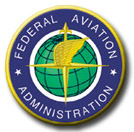All Check Rides are conducted in accordance with the Practical Test Standard (PTS). Most people have a misconception about what can cause a failure. For example; the following is an Area of Operation in the Private Pilot Practical Test Standard which an applicant is being tested:
Note the "Maintains the entry altitude, ±100 feet" statement in #6. Would this then mean if the applicant momentarily exceed their entry altitude by more than 100 feet they will fail? NO this alone is not a failure item, they would have to be "Consistently" exceeding this tolerance in order to fail. Why? in the beginning of the PTS is a section that describes the criteria for "Unsatisfactory Performance", and it states "Consistently exceeding the tolerances stated in the Objectives". This being said, if they promptly correct their deviation, they will avoid getting a "Notice of Disapproval" (Pink Slip). Below is the excerpt from the Private Pilot Practical Test Standard:
To get Adobe Acrobat Reader, follow this link
Recreational Pilot PTS Sport Pilot PTS New Private Pilot PTS Instrument Airplane PTS New Commercial Pilot PTS Airline Transport Pilot PTS Flight Instructor PTS Instrument Instructor PTS
|


